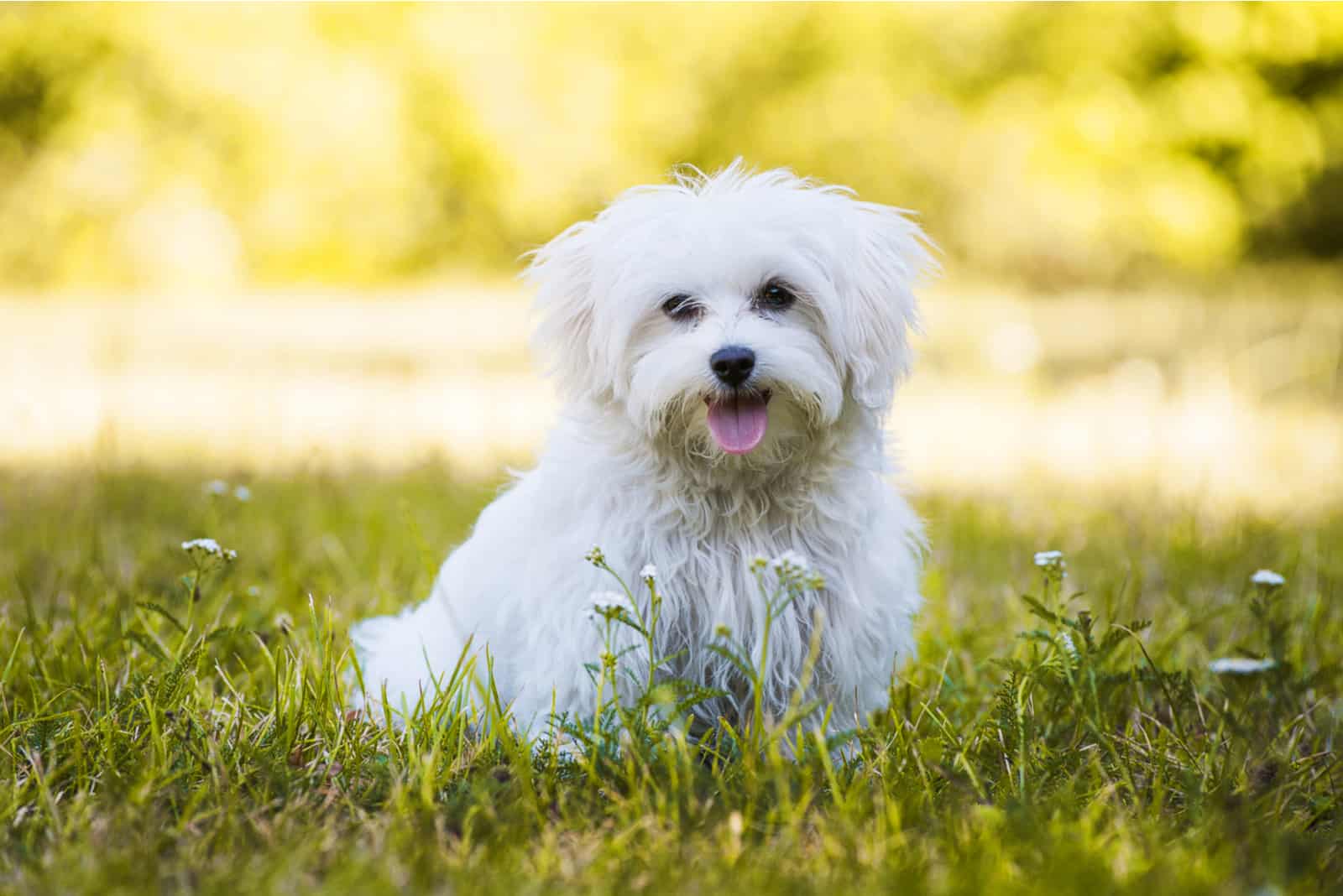Are you looking for a sweet, intelligent dog who is devoted to its owners? You are in the right place. The Maltese is perfect for you.
This elegant toy dog breed is famed for the silky white hair covering its whole body. Straight and thick, the coat falls all the way to the floor and gives them a look of haughty nobility. Many years ago, Maltese came in many colors, but these days, they are always white.
Artists, poets, and writers immortalized this small dog in the early great cultures of Greece, Rome, and Egypt. They were even mentioned by Aristotle. The Maltese were known as ”Ye Ancient Dogge of Malta,” which for more than 28 centuries, has been an aristocrat of the canine world. These dogs were recognized by the American Kennel Club (AKC) in 1888.
If you are wrestling with the final decision of whether you should choose a male or female Maltese, stay with us! In some ways, choosing between male and female dogs is a matter of personal preference.
However, some traits are common in females, and others are common in males. It is important to evaluate them and determine which gender would fit in best with your home situation when you choose a puppy.
Let’s look over male vs. female Maltese differences.
What Is The Difference Between A Male and Female Maltese?

Both male and female Maltese are excellent choices for a family dog. Being one of the smallest of the toy breeds, Maltese dogs are well suited to apartment or condo living. They are also an attractive breed of lapdogs (they like to cuddle).
The differences between male and female Maltese are not very obvious. They have big, dark eyes and a shortened snout, resembling a Shih Tzu in appearance. If bred properly, they are hard to tell apart by size, and their behaviors seem to be more distinctive due to individual personalities rather than gender differences. Gender differences in Maltese are very subtle, but they exist.
Both male and female Maltese should weigh no more than seven pounds at maturity, with four to six pounds being preferred. They should be eight to ten inches tall at the shoulder.
Due to their similar size, both male and female Malteses consume similar amounts of food, require similar amounts of grooming, and other living expenses.
Check out the table below to see the main male vs. female Maltese differences:
[table id=68 /]
Male Vs. Female Maltese – Temperament
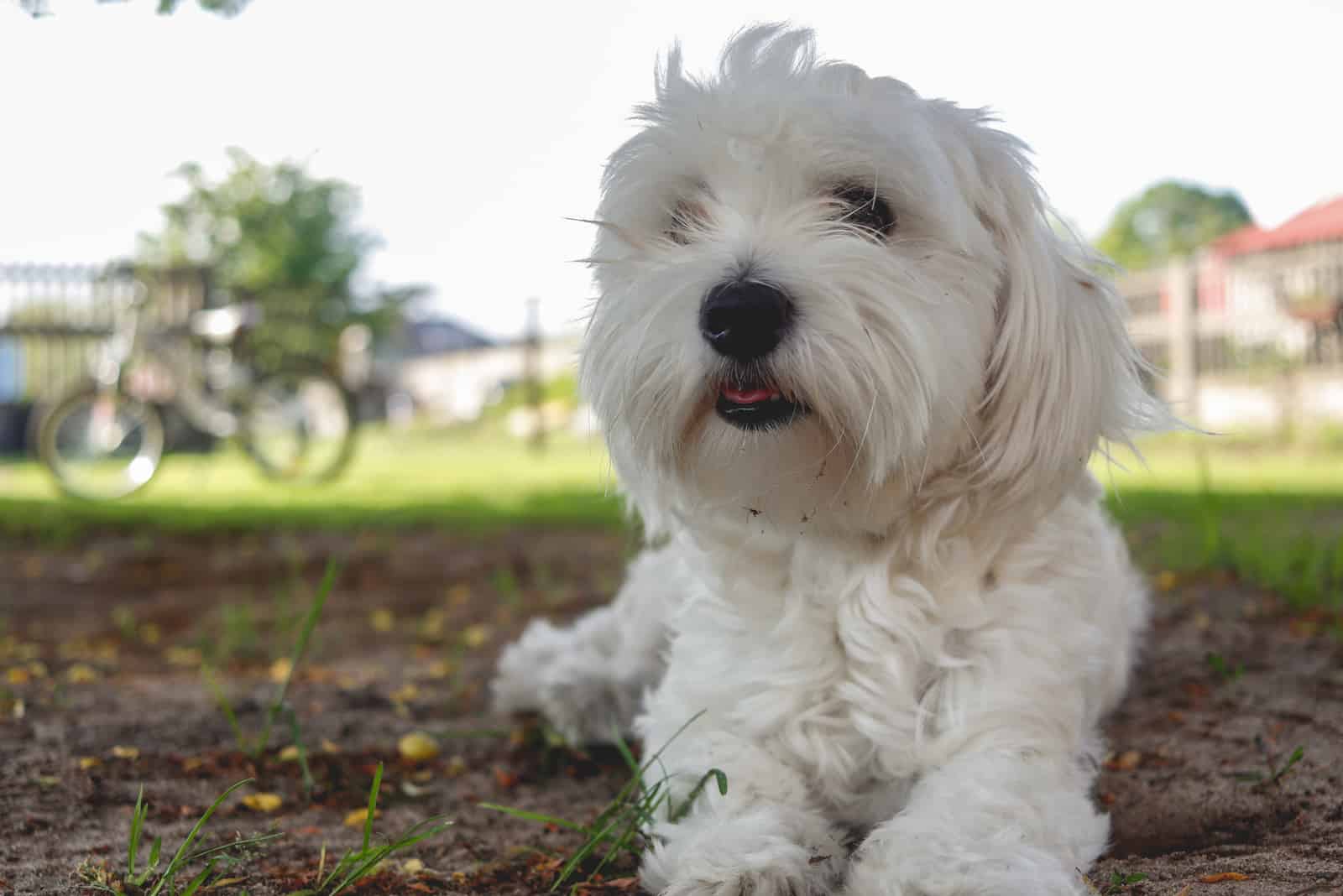
Despite their small size, Maltese dogs are extremely brave – in a small, toy dog kind of way. They are very trusting of strangers and respond very positively to affection. Maltese assume that everyone they meet – human or animal – is a friend.
These dogs also have good manners. They are gentle and typically do not engage in aggressive behavior like some other small dogs. Maltese dogs enjoy playing with other dogs.
Their temperament is affected by a number of factors, including heredity, training, and socialization. Like every dog, Maltese need early socialization – exposure to many different people, sights, sounds, and experiences when they are young. Socialization helps ensure that your Maltese puppy grows up to be a well-rounded dog.
In the context of male vs. female Maltese temperament, one thing is worth mentioning – alpha behavior.
Alpha Behavior
Male Maltese
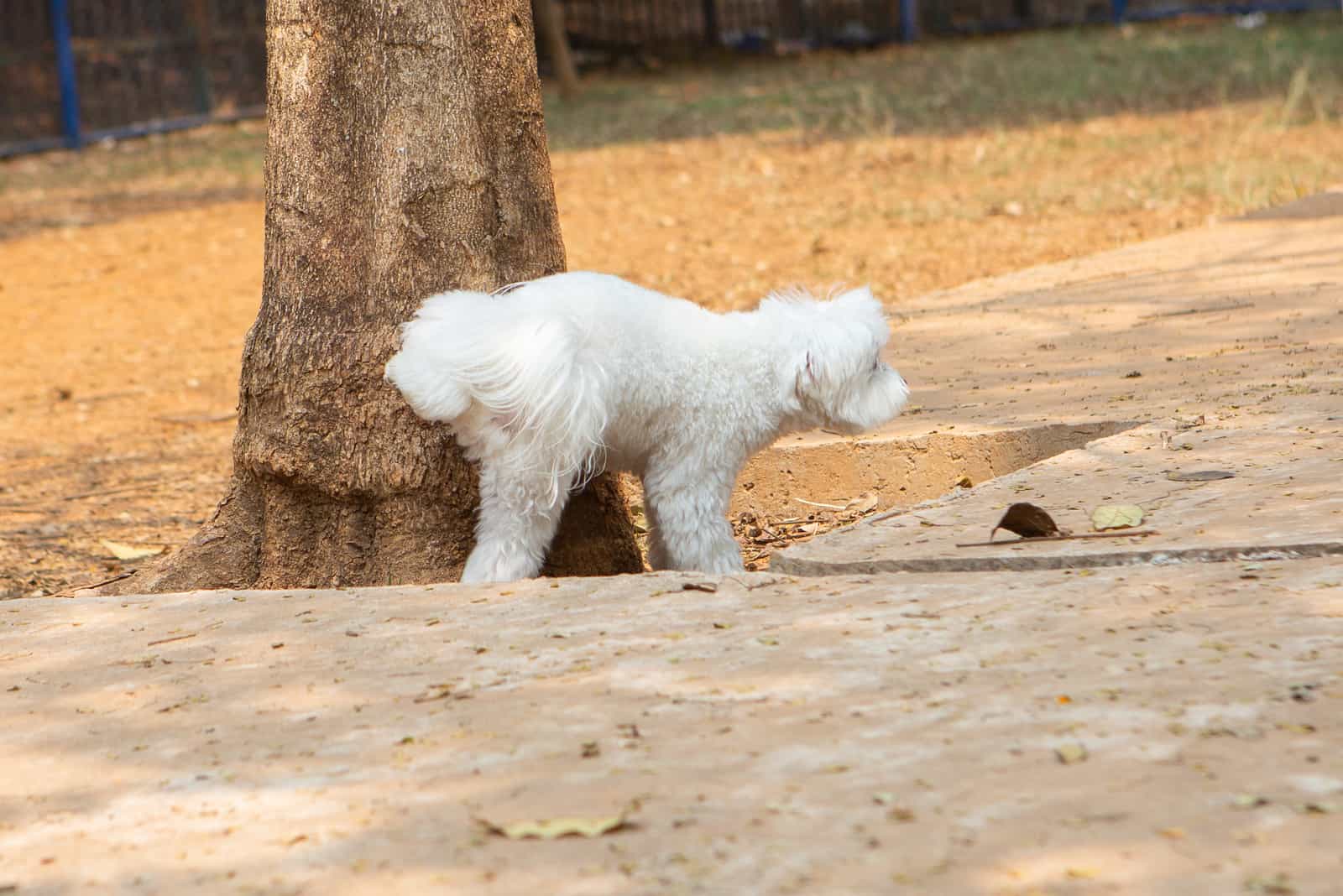
Contrary to what you might think, a male Maltese isn’t more likely to show alpha behavior than a female Maltese. Actions like raising one leg to pee in an attempt to mark territory, humping, and getting involved in territorial fights are all examples of alpha behavior.
They are also called secondary sexual behavior and are more predominant in females. Although, a male Maltese’s tendencies to display aggressive behavior depends on if he was neutered early enough or not.
If you still notice your male Maltese raising a leg up to pee and mark his territory after he was neutered early, it might just be a learned behavior from other dogs.
Female Maltese
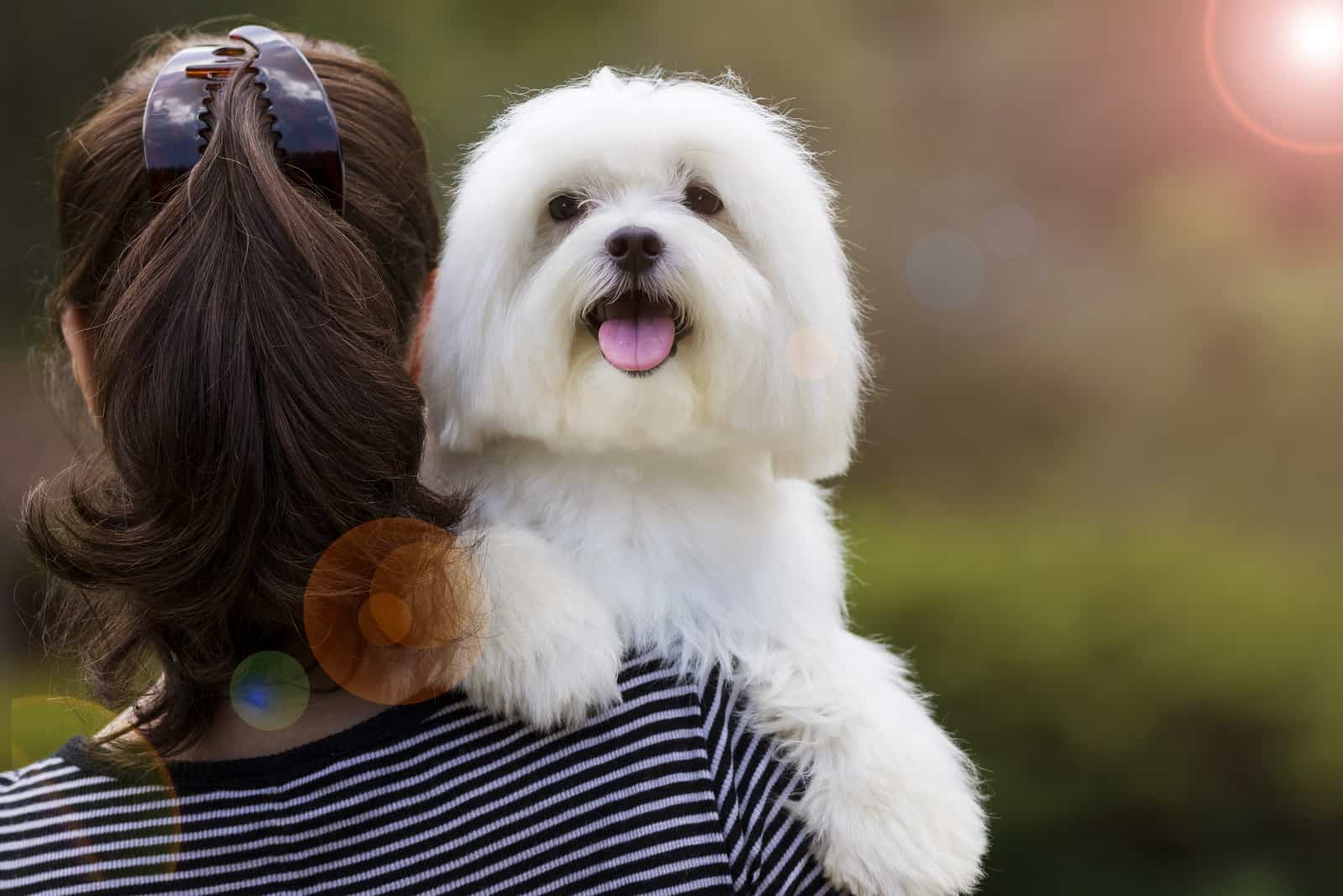
A lot of people think that they want a ‘sweet girl.’ They believe that female dogs are more docile and attentive and do not fight for dominance. This could not be further from the truth!
In the canine world, females are at the top of the hierarchy. As a result, a female Maltese is prone to being territorial, defensive, more stubborn, and independent than her male counterparts.
Females are more likely to display alpha behaviors like humping, raising their legs to pee, or getting into fights. The chance that you’ll find two female dogs fighting is higher than that of males.
This is especially true if she hasn’t been spayed or wasn’t spayed early enough. Female Malteses are more likely to display aggressive behavior than their more agreeable male counterparts.
For these reasons and others, most breeders will advise you not to get two females, but there’s nothing wrong with getting two boys.
Breeders will also advise you to spay or neuter your pet Maltese to prevent breeding and future health problems. This is a somewhat mandatory procedure for both genders to avoid extreme discomfort during heat cycles and increase your pet’s life expectancy.
Let’s find out why male vs. female Maltese spaying/neutering is recommended.
Spaying A Female Maltese
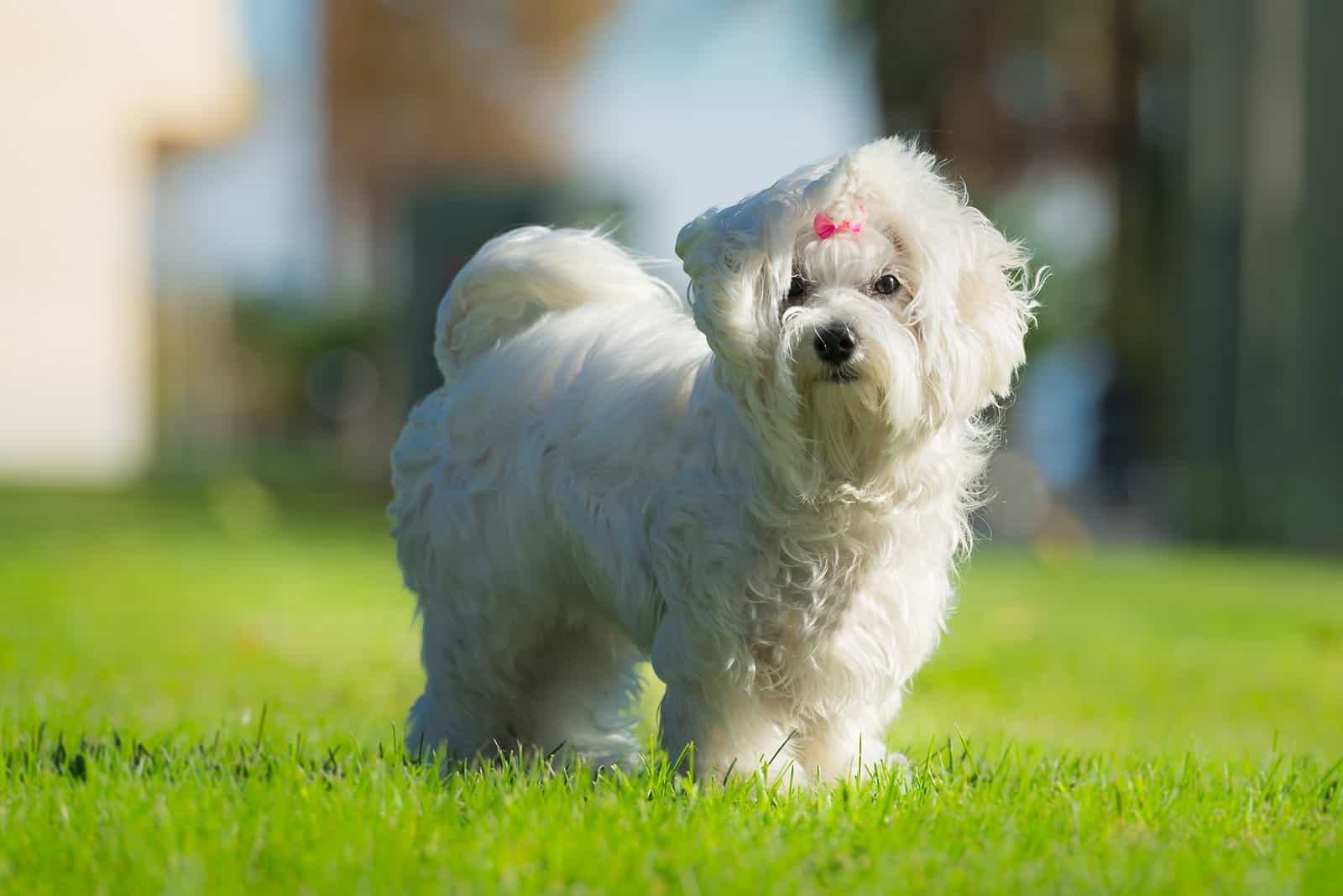
Unless you plan on breeding your female Maltese, it is recommended that you spay her. Spaying is the surgical removal of the ovaries and uterus. This operation is a little complicated, but it is still considered routine.
Spaying is recommended starting at four to six months of age. In most cases, the younger a dog is, the more health benefits. Generally, the recommended age is before a female enters her first heat cycle. If so, this will essentially eliminate her chances of developing some health issues.
The heat cycle can be a month-long nightmare, not just for the female but for you and every male dog in the neighborhood. During this time, she can leave a bloody discharge on carpets, couches, or anywhere else that she goes.
She will be particularly “moody and emotional” during this time too. Just a walk outside can become hazardous if male dogs are in the vicinity, she will leave a ‘scent’ for wandering intact males to follow you right back to your yard, where they will hang out and wait for days. And then, she will come back in heat about every five to eight months until you have her spayed.
Benefits of spaying:
• Prevents unplanned pregnancy
• Eliminates chances of ovarian cancer
• Reduces chances of mammary cancer and ovarian infections
• Helps with territorial marking issues
• Helps stop hormonally related behaviors such as mood swings and trying to run away.
A female Maltese will need about 2 weeks of recovery time, at which time the stitches will be removed. This involves lots of rest and no purposeful exercise.
Neutering A Male Maltese

Neutering prevents aggressive and territorial behaviors, and it also means that your dog won’t be spending his entire walk hunting for a partner. With neutering, your vet removes not only the testicles but also any associated structures.
Neutering is recommended at a young age, similarly to females, at around four to six months of age. Neutering can reduce several common health problems:
• Eliminates the chance that a male dog could sire a litter
• Eliminates the possibility of testicular tumors
• Reduces the risk of prostate disease.
Neutering also:
• Helps prevent or resolve diseases and conditions related to testosterone
• Helps with territorial marking issues
• Helps stop hormonally related behaviors such as trying to run away.
Most males are up and eager to move around after just a day or two; however, full recovery takes about 2 weeks, with exercise restricted during this time to ensure proper healing.
Male Vs. Female Maltese – Puppy Price

There are no “set” prices for Maltese puppies. Prices vary from breeder to breeder and from one area of the country to another. Pet shop prices are usually as much as or more than a breeder’s puppies. Some breeders offer price options such as a reduced price on a puppy that is sold on a spay/neuter contract.
A pet shop is usually not a good place to purchase your Maltese. Most of these dogs come from commercial breeding farms concerned only with producing for the retail market. Little or no concern is given to the quality, socialization, care, or even health of the animals.
Instead of buying your puppy from a pet shop, try to locate a dedicated, experienced breeder-exhibitor. The goal of these breeders is to improve the breed, and they spare no expense in trying to breed the best Maltese they can. By contacting a breeder, you will have the opportunity to see where your puppy was raised and, possibly, see several generations of ancestors.Let’s look over male vs. female Maltese differences in price.
Male puppies
Male Malteses are less expensive than female Maltese. In many cases, the price difference could be as much as a thousand dollars.
Because of the general misconception hovering around male Maltese, they are not in as high demand as female Maltese, and this contributes to their price.
Female puppies
Female Malteses are more expensive to acquire, partly because they are in higher demand but also because breeders are less willing to let go of their females than their boys.
This is so they can produce the next generation of litters. This also explains the huge disparity in prices between male and female Maltese puppies.
Other breeders tend to reserve only the highest quality females for themselves, especially show breeders. So as puppies are born, most of the males are immediately placed on sale, while the females are reserved.
Male Vs. Female Maltese – Training
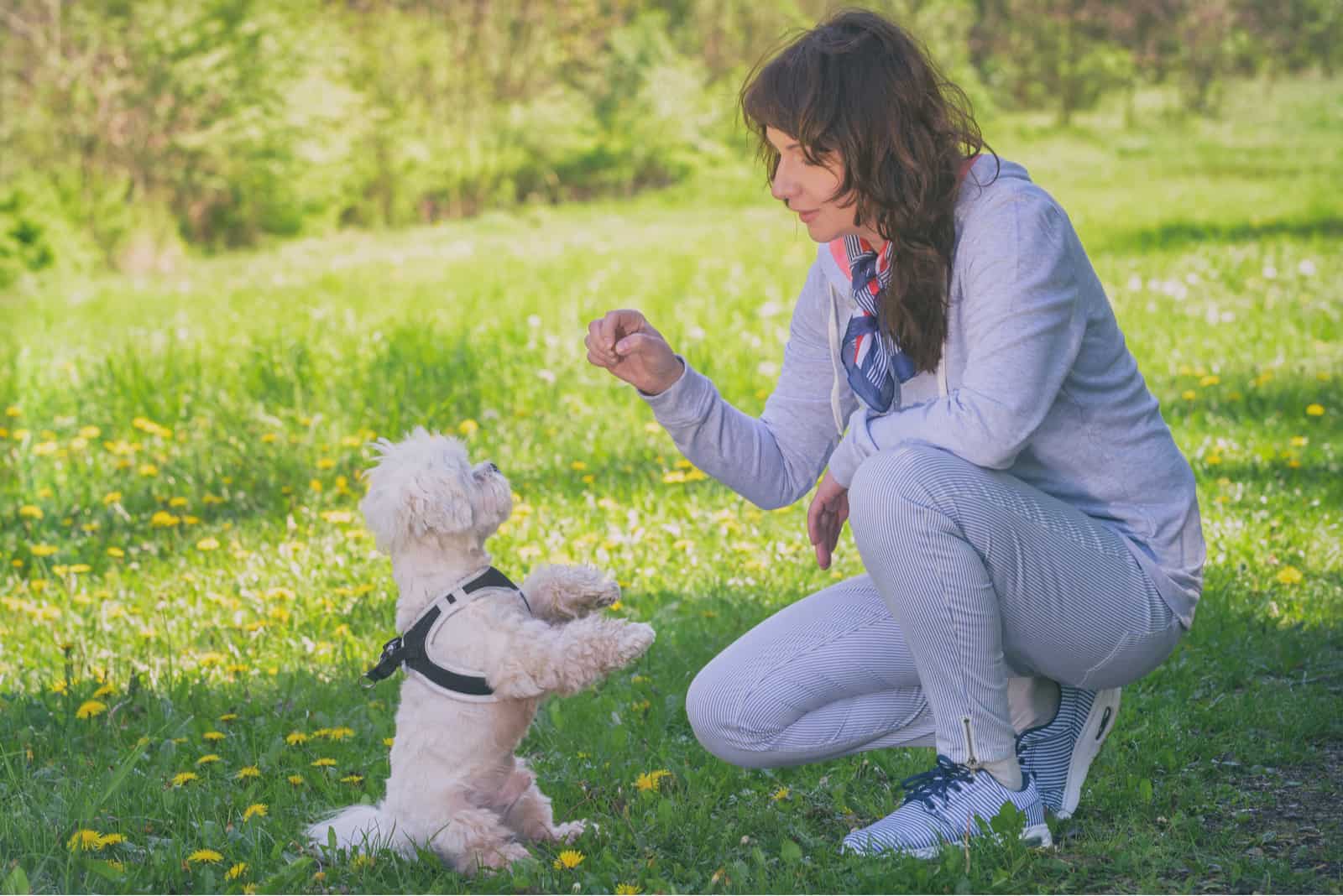
Maltese are very intelligent, and in centuries of being companions to humans, they have learned how to get exactly what they want from their people. It is important to be consistent with their training.
These dogs are one of the easiest toy breeds to train. Positive reinforcement can go a long way with this breed. With praise and treats, these dogs pick up on commands very easily.
Occasionally, the Maltese can have a stubborn streak. Usually, this is the result of you being lax on the house rules or not training your Maltese for a few weeks. However, if you do find that your
Maltese suddenly doesn’t want to listen, a little extra praise and treats can help snap them out of it. Once they realize food is involved, they will likely get back into training.
These dogs should never be treated harshly or negatively corrected. Their small size makes them easily intimidated. But their fearless attitude means that they won’t back down from a fight. They often see their teeth as their only way of protecting themselves. When they feel cornered, biting is usually their first instinct.
House-training a Maltese takes a very long time, even months. That’s why many dog owners are advocates for crate training – a method of dog management that involves keeping the dog confined to a crate. Crating is especially appropriate for Maltese because they are small; they take well to crating and thus, can avoid many risks.
The owner of a crated Maltese never comes home to a potty mess on the rug, chewed electrical cords, or unraveled toilet paper! Furthermore, your little guy is not overly stressed when he has to be confined for unusual situations like traveling, moving, boarding, when a female is in heat, or recuperation from an illness.
In the context of male vs. female Maltese training, the following is also important.
Male Maltese
Because they aim to please, male Maltese tend to learn new things pretty fast. They are the perfect pets to train using positive reinforcement techniques like treats and petting to get the job done.
However, since they have a more playful nature, they tend to get distracted during training, therefore, requiring more time and patience to adapt to new commands.
Female Maltese
As intelligent dogs, they learn very fast. A female Maltese is more interested in getting the tasks done so she can return to her safe space. For this reason, they tend to be more focused during training.
As a result, females are a little easier to housebreak. Also, training commands are more likely to stick faster with a female Maltese than her male counterpart.
Are Maltese Good Family Dogs?
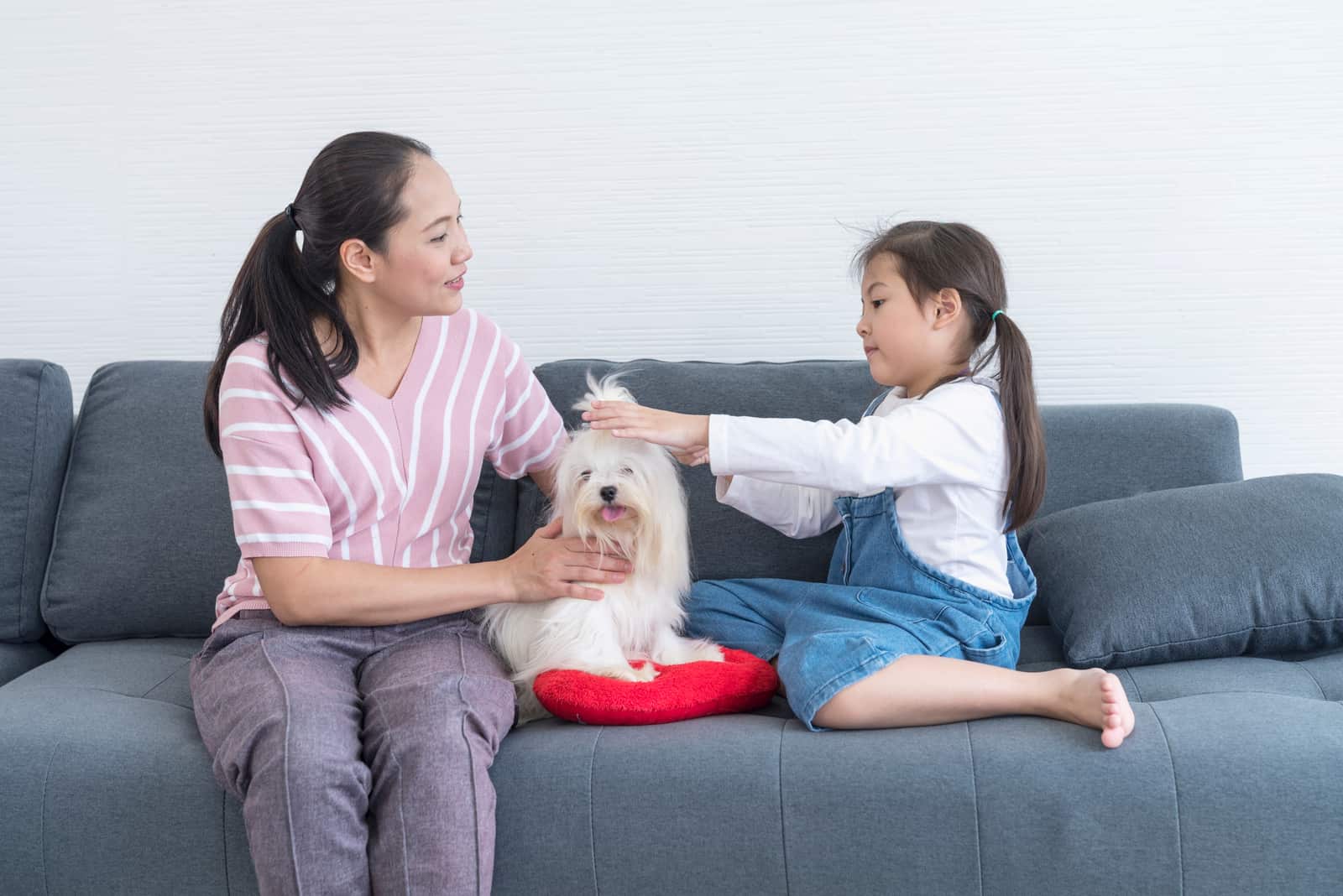
Back in the 17th and 18th centuries, the Maltese breed was almost destroyed; there were attempts to breed Malteses to be the size of a squirrel. After this nearly disastrous experiment, breeders mixed poodles, miniature spaniels, and East Asian miniature dogs with the breed to save it.
This resulted in the Maltese becoming so varied that several new breeds were formed. It is thought by many that Maltese are the direct ancestors of the Bichon Frise, Bolognese, and Havanese breeds.
Luckily, today, Malteses are family-friendly and do well in homes with older children. They are usually friendly towards most strangers and enjoy attention, whether from a family member or a stranger.
These dogs typically settle best in households with grown-ups only or sensible older children. Since they were bred to crave human company as lapdogs, they are happiest in a household where someone is home all day.
Even though these dogs are friendly towards most people, socialization is still very important. You should regularly take your Maltese dogs out to meet other people and their dogs. The more people they meet, the less likely they are to be fearful when they meet someone new.
Malteses can become aggressive when they feel threatened. It is easy for these tiny dogs to feel intimidated, even if you don’t mean to be. When they are threatened, they usually resort to barking, growling, and biting. These dogs can be very yappy and quite noisy when they feel they are in danger.
The Maltese can be a wonderful, alert dog and will let you know when anyone is at your door. In some cases, this might be a desirable trait!
In the context of male vs. female Maltese behavior towards children and vice versa (children’s behavior towards dogs), here is what you need to know.
These little dogs are fragile and can be easily hurt, so if you have very young children, keep an eye on them. In the interests of safety, these dogs should be watched carefully when they interact with small children.
Your children, in general, need to learn how to act around all dogs. In other words, they must understand how to behave and treat the family dog. This will further minimize mishaps.
If your children aren’t old enough to understand how to treat these dogs with respect, they should not be playing with them. Rough play from children can traumatize a dog. Plus, the dog may eventually “retaliate” out of fear.
Some breeders will refuse to sell Maltese puppies to families with small children. They are very fragile and can be easily injured by rambunctious children.
Do Malteses Like Other Dogs?

Malteses are often described as a gentle and fearless dog breed that greets everyone as a friend. While these dogs have no worries being in the company of other canines (including cats), they generally tend to prefer the company of their human owners.
For most Maltese owners, a Maltese is enough. But for some others, they want more than one canine at home for specific reasons, like preventing a burglar from easily carting away your prized possessions. There are also people who want to save more dog lives from shelters and take them home.
Whatever the reason for getting one more (or even more) dog in your home, be sure that your little boy or girl is safe with the new dog. Their small size makes them prone to injury, and they can be fearful of boisterous, larger dogs.
Training and socialization also play critical roles in how a Maltese turns out. The younger the Maltese, the easier it might be to get them to get along with other breeds, and vice versa (especially if they have been over-pampered by their owner).
While Malteses are generally peace-loving and get along with just about any other breed of dog, the same cannot be said for all other dog breeds. For example, the Maltipoo will easily get along with your Maltese. On the other hand, combining a large breed like a Doberman with a Maltese in the same household may not be a great idea.
Accidents happen, and your Maltese can get hurt even when they are just playing. Be sure that each play session ends on a happy note. The last thing you want is for your Maltese to become fearful of other dogs due to one bad experience.
Generally, most experienced pet owners would advise you to introduce a younger pet of the opposite gender if you intend to have a multi-breed or multi-dog household. They insist that this combination often proves to be the least volatile possible.
Male Vs. Female Maltese – Health

Photo from: @chima_wanwan
Maltese are generally healthy, but like all breeds, they’re prone to certain health conditions. Not all Maltese will get any or all of these diseases, but it’s important to be aware of them if you’re considering this breed.
The following conditions may affect both genders:
• Patellar luxation – The patella is the kneecap. Luxation means the dislocation of an anatomical part (as in a bone at a joint). Patellar luxation is when the knee joint (often of a hind leg) slides in and out of place, causing pain. This can be crippling, but many dogs lead relatively normal lives with this condition.
• Portosystemic liver shunt – This renal disorder occurs when an abnormal vessel causes blood to bypass the liver and therefore not be cleansed.
• Progressive retinal atrophy (PRA) – This is an eye disease that involves the gradual deterioration of the retina. Early in the course of the disease, affected dogs become night-blind; they lose sight during the day as the disease progresses.
• Hypoglycemia – This malady is caused by low blood sugar. Some of the signs may include weakness, confusion, a wobbly gait, and seizure-like episodes. If your dog is susceptible to this, talk to your vet about prevention and treatment options.
• White dog shaker syndrome – This disorder primarily affects white dogs. Signs of the condition are tremors over the entire body, lack of coordination, and rapid eye movements. Episodes usually start when the dog is six months to three years old and is stressed or overly excited. This condition isn’t painful and doesn’t affect the dog’s personality.
• Collapsed trachea – Some dogs are prone to this condition, where the trachea, which carries air to the lungs, tends to collapse easily. The most common sign of a collapsed trachea is a chronic, dry, harsh cough that many describe as being similar to a “goose honk.”
• Reverse sneezing – Reverse sneezing primarily occurs when your dog is excited or tries to eat or drink too fast. It can also occur when there is pollen or other irritants in the air. Secretions from the dog’s nose drop onto their soft palate, causing it to close over the windpipe in an automatic reaction. This can be very frightening to your Maltese, but as soon as he calms down, the reverse sneezing stops.
Should I Get A Male Or Female Maltese?

Most dog owners have different reasons for why they choose to get a dog. For some, looking for a companion might be an important aspect. Others think they’ll become more active if they get a dog. And some people just need a sense of purpose.
All Malteses are beautiful dogs and can easily become a part of your family. The male vs. female question is a very personal one. Think carefully before making your decision.
No matter your personal reasons for why you are looking to get a Maltese, here’s why you should gravitate towards this awesome dog breed.
If you want a more socially confident, reliable, and less moody dog who is, at the same time, more outgoing and accepting of new people and other dogs, as well, then a male Maltese should be your choice. Males also enjoy fun games with the older kids in the household.
However, if you want a more independent dog, who learns really fast, then a female Maltese is the best decision for you. Females tend to be more mature and handle themselves better in your absence, so they are more reliable when staying at home while you’re away for a short time.
Whatever gender you decide to get, make sure it makes you happy. And remember – a bow looks just as good on a male Maltese as it does on a female.
Read Next:
• Teacup Maltese: A Tiny White Pooch To Love
• Black Maltese Dogs: How Come Mine Is Black?

